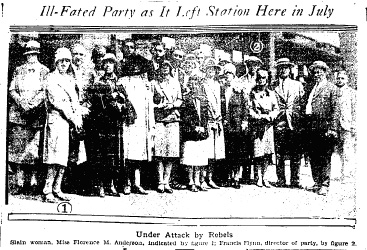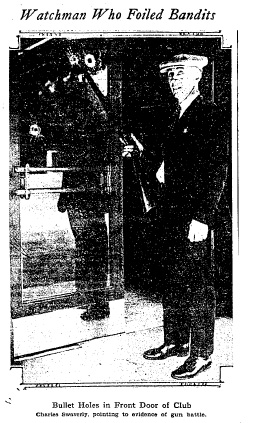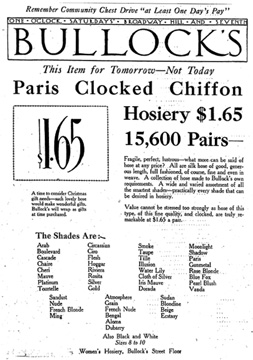
Los Angeles
August 28, 1927
Five days ago, twenty Mexican “rebels†descended on a train carrying among its passengers a group of American schoolteachers headed back to Los Angeles after a summer session at the University of Mexico. Eyewitnesses said about 40 shots were fired into the cars, one of which hit 27-year-old Florence M. Anderson of 3414 Third Avenue, Los Angeles, in the left hip. Anderson, a popular member of the travel party, was taken to a hospital in Maztalan. Doctors operated on the stricken high-school Spanish teacher, but peritonitis set in and she died later the same day, the only passenger injured in the melee.
Now comes word that Florence Anderson’s father and a cousin, Mrs. Jean Garrison, are fighting over the disposition of her body, which arrived in Los Angeles early today.
Spokane newspaperman Charles H. Anderson, says that Florence sent him letters from Mexico in which she declared her affection for him. He says he is “puzzled†by the relationship between Garrison and his daughter, and pointed to news reports which first described them as aunt and niece, then as cousins. At any rate, he intends to have Florence buried “with her ancestors†in California-and asked Southern Pacific to release his daughter’s body to him.
Jean Garrison, on the other hand, claims to have her cousin’s will, handwritten less than two months ago on the eve of her departure for Mexico. It states that Florence Anderson wished to be buried next to her mother in a Denver cemetery.
The tiebreaker was an affidavit filled out this morning by Francis Flynn, manager of the ill-fated tour group. “When Miss Anderson was shot and afraid she would die,†Flynn told reporters, “she called me over and told me to send her things to Mrs. Garrison and to notify her about everything, but that her father was not to be communicated with.†There were “strained relations†between them and “she had had only two communications from him in recent years.â€
The will and affidavit were good enough for Southern Pacific, which released Florence Anderson’s body to Mrs. Jean Garrison. Both are en route to Colorado. It is also being reported that Garrison has “demanded through the State Department $100,000 [approximately $1.2 million today] reparations of the Mexican government for her cousin’s death.â€
Postscript. Charles Anderson gave it one more shot. On September 1, 1927, the Times reported that he had retained counsel and asked for a photographic copy of his daughter’s will, which left the bulk of her $10,000 estate (about $118,000 in 2007) for the education of two young cousins, Claire and Arthur Strong (ages 13 and 11, respectively). Perhaps he thought better of it; the Times makes no further mention of this sordid mess.









